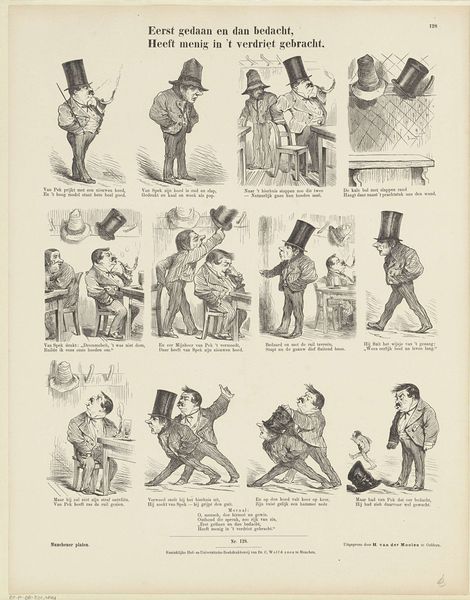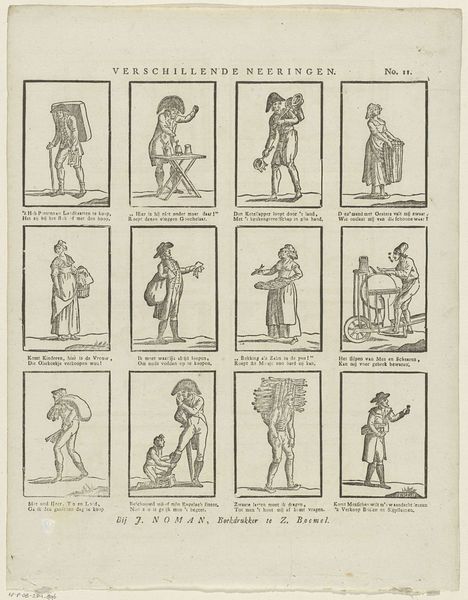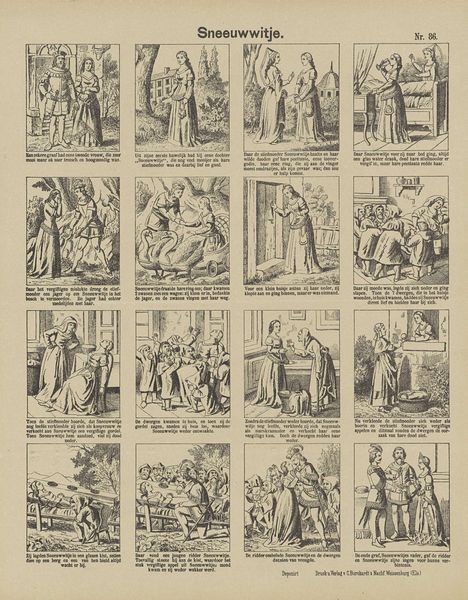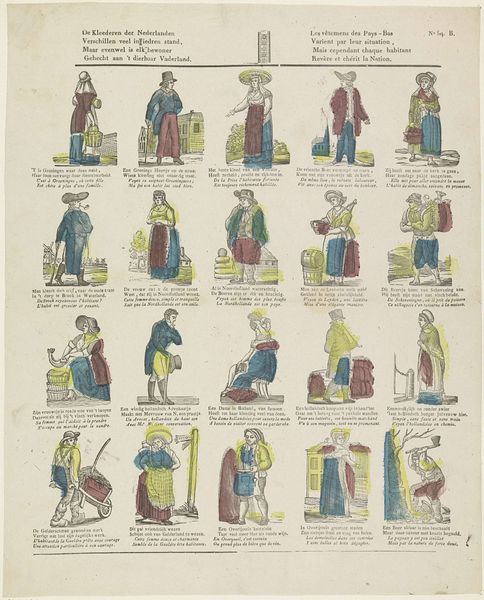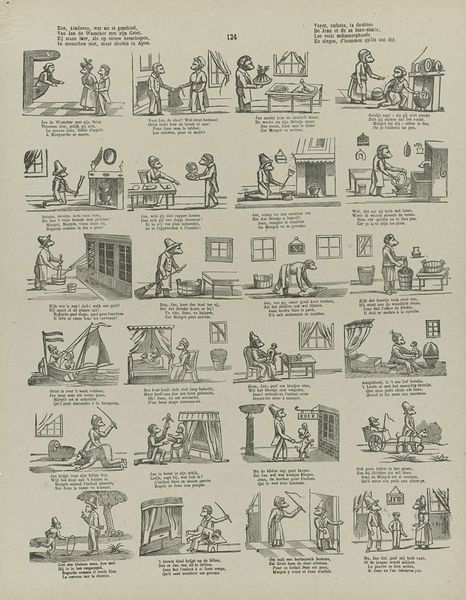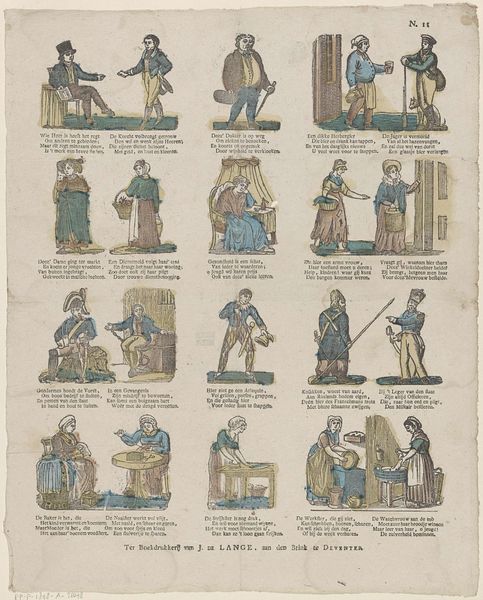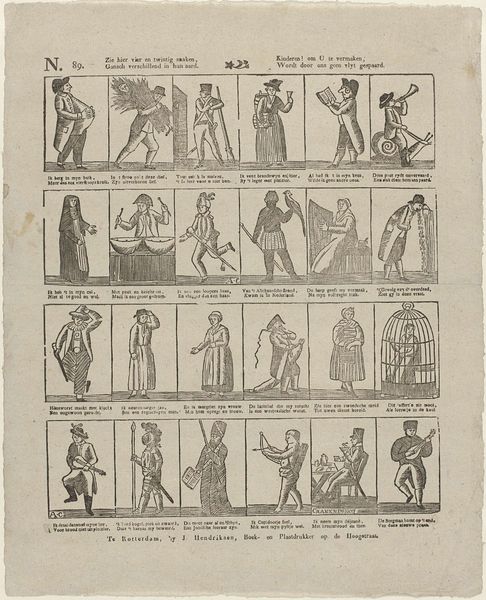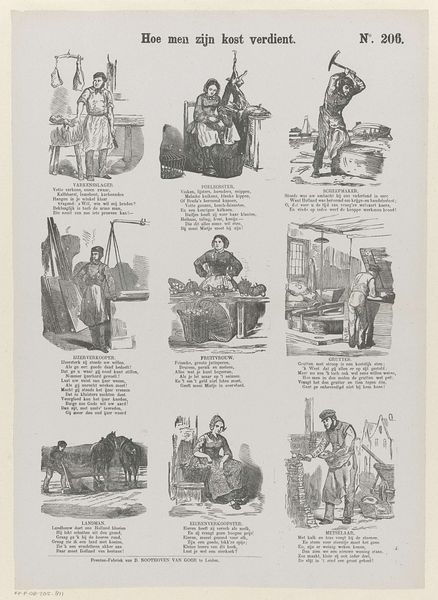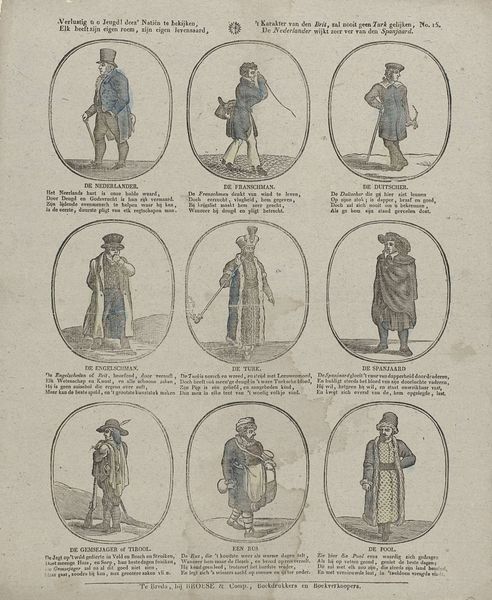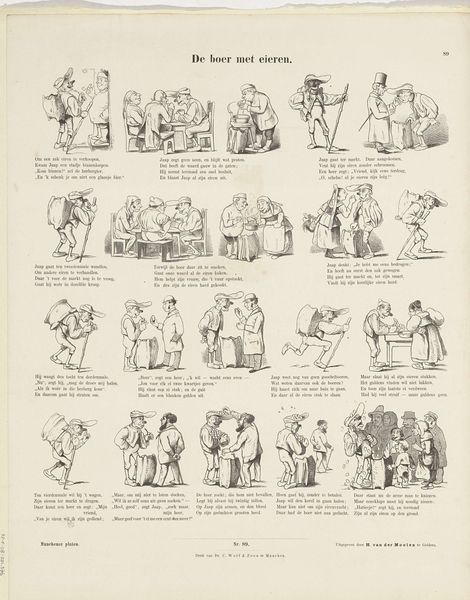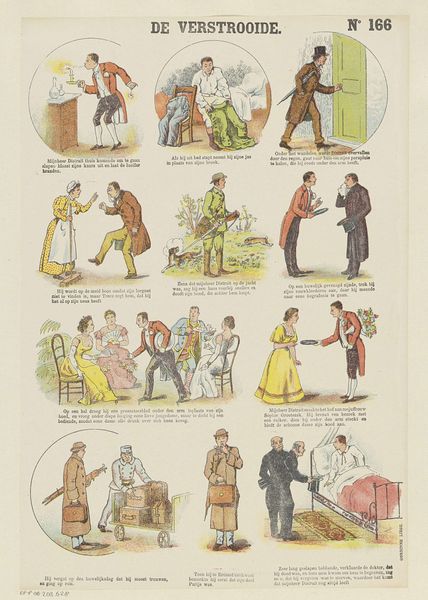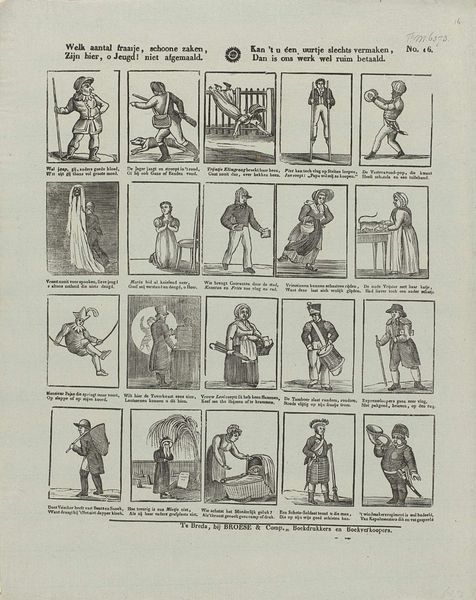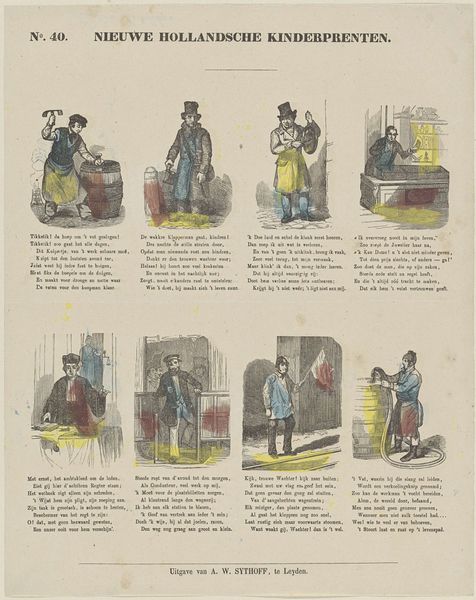
De kleederen der Nederlanden verschillen veel in ied'ren stand, / Maar even wel is elk bewoner gehecht aan 't dierbaar vaderland / Les vêtements des pays-Bas varient par leur situation, / Mais cependant chaque habitant révère et chérit la nation 1800 - 1833
0:00
0:00
print, engraving
#
portrait
#
dutch-golden-age
# print
#
genre-painting
#
history-painting
#
engraving
#
realism
Dimensions: height 403 mm, width 279 mm
Copyright: Rijks Museum: Open Domain
Curator: At first glance, this print feels like a meticulous catalog, doesn’t it? There’s something very orderly about it. Editor: Indeed. We are looking at a work by Philippus Jacobus Brepols, entitled "De kleederen der Nederlanden verschillen veel in ied'ren stand, / Maar even wel is elk bewoner gehecht aan 't dierbaar vaderland / Les vêtements des pays-Bas varient par leur situation, / Mais cependant chaque habitant révère et chérit la nation". It’s an engraving dating from around 1800 to 1833, currently residing at the Rijksmuseum. It seems preoccupied with the documentation of diverse attire. Curator: The very title sets the tone, focusing on variation within the Dutch regions and linking it strongly with a sense of national belonging. This feels inherently about labour, class, and geographic factors, and how clothing articulates social identity. Editor: Precisely. Note how Brepols utilizes line work. The crispness and clarity with which he renders each figure emphasizes silhouette and form. Each occupation seems defined and neatly contained. Do you think the choice of printmaking has an influence? Curator: Undoubtedly. Engraving facilitated mass production and dissemination. It speaks to a desire to visually codify, to categorize and share this understanding of Dutch society more broadly, but of course also to define Dutch labor—its materials and production. It hints at the burgeoning industrial and political shifts of the era. It underscores consumption as tied to nationhood. Editor: Absolutely, and I see in the formal construction of the work, each character existing within its defined space, a semiotic structure that echoes broader societal categorizations. The clothes themselves function as signs. Curator: Ultimately, this piece, which can read initially as quaint, possesses significant power when we recognize it as an instrument, not only of documentation but also of ideological propagation in a time of great transformation within Dutch society. Editor: I agree. Looking again, the strict organization, the meticulous detail; it suggests more than observation. It hints at the complex act of defining a nation, visually and materially.
Comments
No comments
Be the first to comment and join the conversation on the ultimate creative platform.
